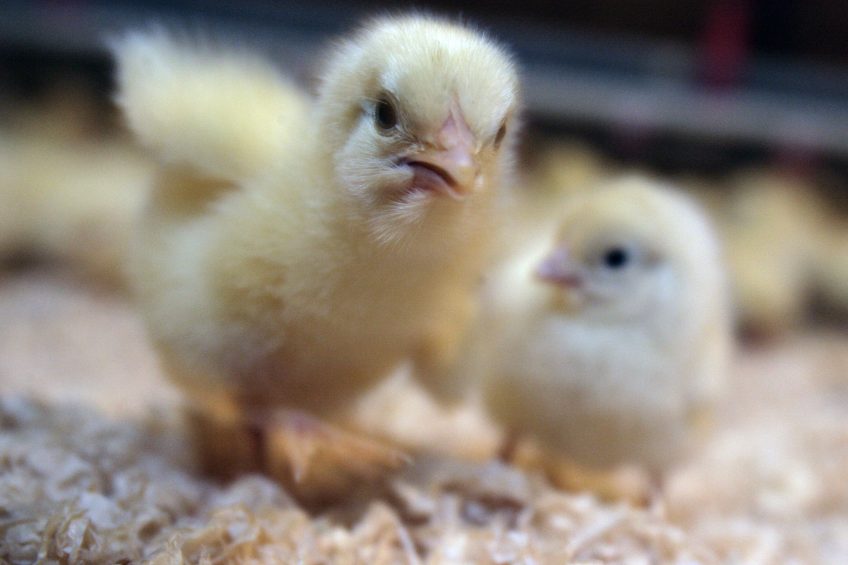Using data to manage bird health

New technology that monitors farm trends in real time could help the industry achieve further reductions in medicine use. Attendees of the latest Broiler Forum meeting heard how.
Broiler growers could make more use of the modern technology in the drive to reduce antibiotic usage.
By generating and processing data from a broiler flock, it could provide the earliest possible warnings that things may not be going right, according to Richard Lloyd, of Innovation for Agriculture (IFA).
“Bringing data together gives you the information to monitor and get really early warnings that something is going to go wrong, or has gone wrong,” said Mr Lloyd, who is precision livestock manager at IFA.
“And when you get early disease detection, you can then go in early with the antibiotic, so you tend to use less, because you’re going in at the early part of the challenge.
“Secondly, it gives an opportunity to take some preventative steps instead.”
Threat
His colleague, Joshua Onyango, reminded the audience of the findings of the O’Neill Commission, which predicted 10 million deaths annually worldwide by 2050, associated with pathogens becoming resistant to different types of treatment, compared with 8.2 million for cancer and 1.2 million for road traffic accidents.
“If we don’t act now, we are going to have a big problem in the year 2050. That is why there is a big call to use antibiotics responsibly and come up with a different strategy.
“Studies have found that already, up to 5,000 people a year die in England alone due to resistant pathogens.”
Mr Lloyd pointed out that this was not a scare, like predictions made for mad cow disease in humans. “This will go right to the top of the public’s agenda, because everyone soon will know someone who has died because they’ve have had an infection that has not been able to be treated.”
The good news is that the poultry sector was leading the way compared with other meat sectors, he suggested. Levels of antibiotic use were down to 25mg of antibiotics for every kg of chicken produced, compared with the pig sector at 183mg/kg.
Emerging tech for broiler management
|
Lower levels
“The levels in poultry, mainly broilers have gone down again, and I have heard reports of levels in broilers down to 10mg/kg. We can keep pushing and getting the levels down and down again,” said Mr Onyango.
His message was that precision livestock farming could help drive antibiotic usage even lower, defined as the use of technologies to monitor real-time physiological, behavioural and production indicators in flocks.
“What we’re actually doing is giving you better management tools to make decisions, and give you early warnings. That’s the whole tenet of it, explained Mr Lloyd.
“Signs that things are going wrong with birds are water consumption, activity, feed, faeces. There will also always be daily fluctuations, and the key with all these technologies is understanding the rhythms and spotting something abnormal, through continual monitoring of the bird’s data.
“We’re not asking people to look at all the datastreams and figures as they come up. All these are associated with alarms. Every one of you will have different skills, but you can all respond to alarms when something goes below a limit.
“And the sooner you get the alarm, and the sooner you do something about it, the less stress there is on the whole flock. That’s the whole point of technology to improve animal welfare, so you can spot things at a much earlier stage.
“If you have several sheds on the unit, you’ve got almost identical things to compare. Then you can compare activity of the birds, and if you know one shed is different to another, although I don’t think you will answer it by looking at the data, you can then try things out.”
Innovation for Agriculture Innovation for Agriculture is a charitable consortium of 16 English Agricultural Societies designed to help farmers make the best use of existing and emerging knowledge in the agricultural sector. |
Challenging comparisons
One grower said that his biggest problem was the difficulty of comparing one shed with another, as it all depended on the quality of chick that came in to each shed: “They are all from different flocks and different hatcheries, and so we’re downstream to where the problem occurs.”
David Speller of Applied Poultry believed that growers could begin to pool data from their farms to overcome this problem, possibly using social media. “We have the ability as growers to share data in any useful way, and that is probably where some of this is going to happen, particularly on the physical data.”
Mr Lloyd suggested there were 2 options for implementing a precision livestock management approach. “You can either put it all together yourself, and handle the alarms, or contract it out to someone else. Either way you need to have that control of your business.”













